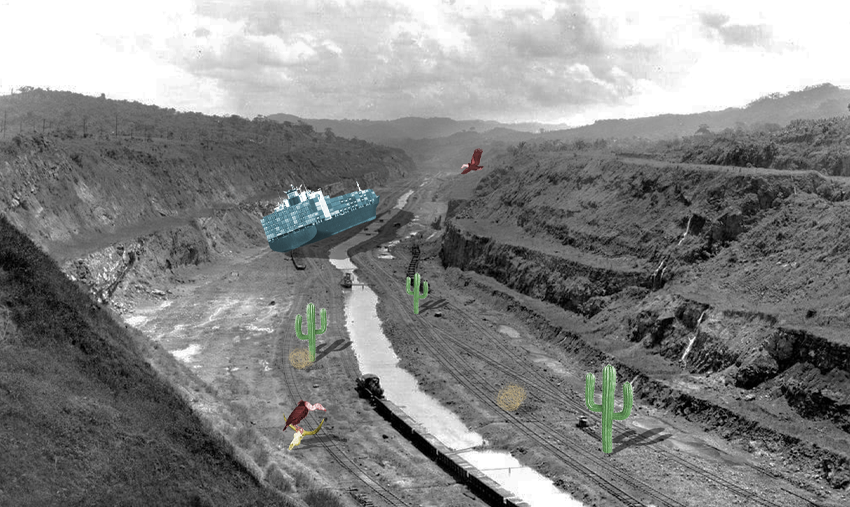Whatever happened to “A man, a plan”?
Historic drought = Panama Canal bottleneck = consumer pain

The Panama Canal is running low on water, which is, you know, not great.
Since its opening in 1914, the canal has revolutionized freight shipping in the Americas. Before then, the trip between New York to San Francisco sent ships 14,900 miles around Cape Horn, all the way down at the tip of South America. Now, the same trip takes half the time and even less than half the distance – about 6,200 miles. In other words, the Panama Canal saves a whole lot of businesses a whole lot of time and money.
But because of unprecedented hot and dry conditions – not just in Panama, but around the world – we will continue to see a connection between the planet’s health and that of the canal. This year’s drought has been exacerbated by El Niño, which causes Pacific temperature increases and has delayed the start of Panama’s rainy season – resulting in a decrease in water levels in the reservoirs that feed the canal.
So, whether you are an economist, an environmentalist, a business owner, or a parent buying holiday gifts, this one is going to sting. “This is the worst we have seen in terms of disruption,” a propane seller recently told The New York Times.
Thanks to historically low water levels in the lakes that feed the canal—Gatun and Miraflores—the Panama Canal Authority slashed the number of ships permitted to make the every day, from 29 to 25. By February the number will decrease even further, to 18 ships a day – no more than 50 percent of the full operating capacity.
Predictably, this has created quite a parking lot of backlogged ships, most of them full of consumer goods going to market. Some ocean carriers are paying to skip the line, adding as much as $2.4 million to the standard transit fee of $400,000 per vessel. These extra costs will likely end up being passed on to the consumer. And that consumer is you, by the way: U.S. imports and exports account for 72.5% of all canal traffic, and 40% of all U.S. container traffic goes through the canal—about $270 billion worth every year.
Naturally, the canal authority is working on viable solutions that don’t require… you know, convincing the whole world to suddenly get serious about climate change. One such measure is cross-filling – transferring the water from one lock chamber into another, saving the consumption equivalent of five daily crossings. Another method is “simultaneous lockage,” where two ships that are transiting at the same time occupy the same chamber (this one depends on having two vessels of compatible size). The canal authorities are also trying to optimize water savings in every chamber, through the careful scheduling and direction of transits.
In the meantime, ships going to and from China can always sail through the Suez Canal instead, adding about a week to their trip – and emitting more greenhouse gases as well. It’s a vicious cycle, and one that everyone would like to see resolved quickly.
